Kadina, South Australia
Article about South Australia's Kadina for senior and mature couples and solo travellers on a small group tour. Learn about Aboriginal or colonial or natural history of the place.
14 Jul 21 · 9 mins read
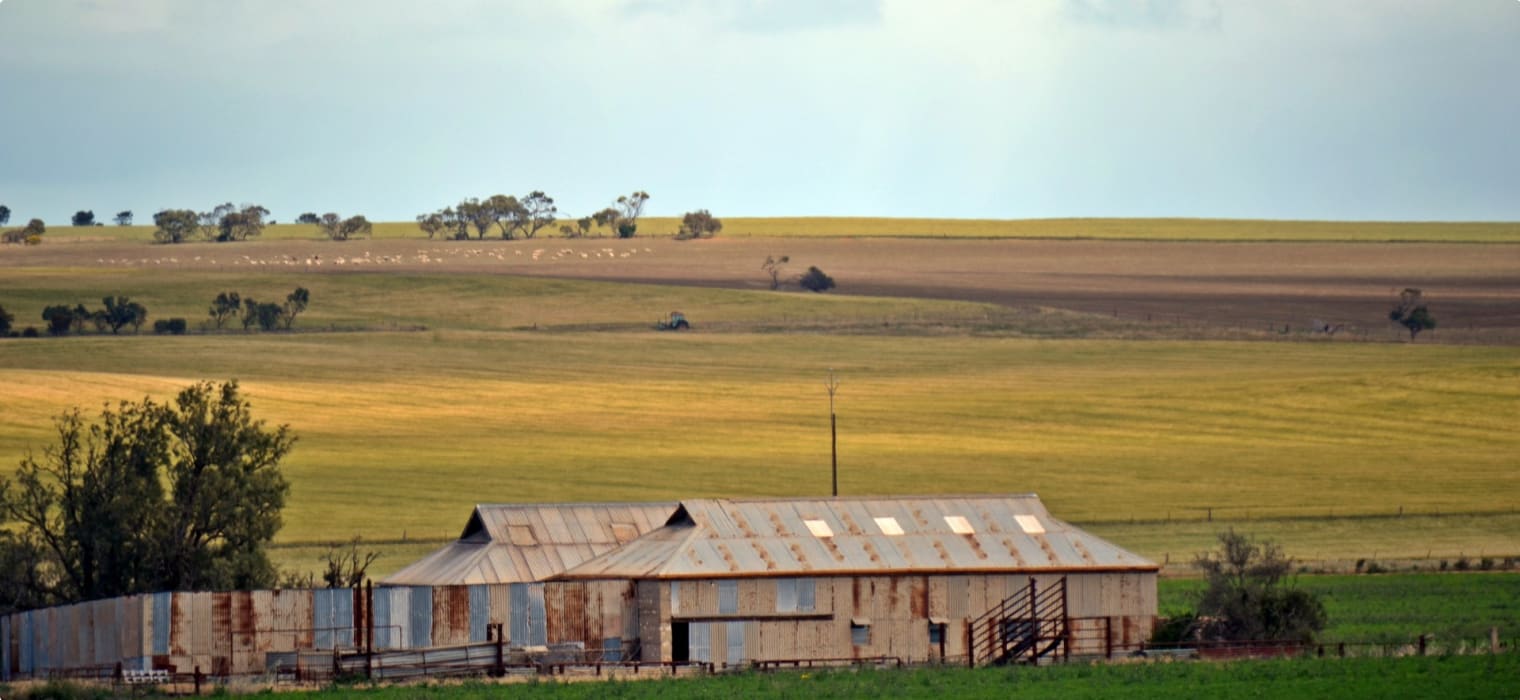
Kadina
Kadina is the largest town on the Yorke Peninsula, South Australia, only 148 kilometres from Adelaide. Along with the nearby towns of Moonta and Wallaroo, it was established as a direct result of copper mining in the early 1860s, servicing the nearby Wallaroo and Moonta Mines, which were worked continuously for more than 60 years. The three towns form a triangle, now commonly called the Copper Triangle on the Copper Coast. Copper mining has long ceased to be the main industry of Kadina, the mines having closed in 1923, but the town has survived, becoming the main commercial centre for a very prosperous agricultural region.
This article explores the history of the Wallaroo Mine and Kadina as background reading for Odyssey Traveller’s Tour of the Eyre and Yorke Peninsulas, during which we visit the towns of the Copper Triangle. This small group tour is limited to 15 people and is designed for mature and senior travellers, travelling as a couple or single traveller. Much of the information from this article is drawn from the Copper Coast Council’s Discovering Historic Kadina.
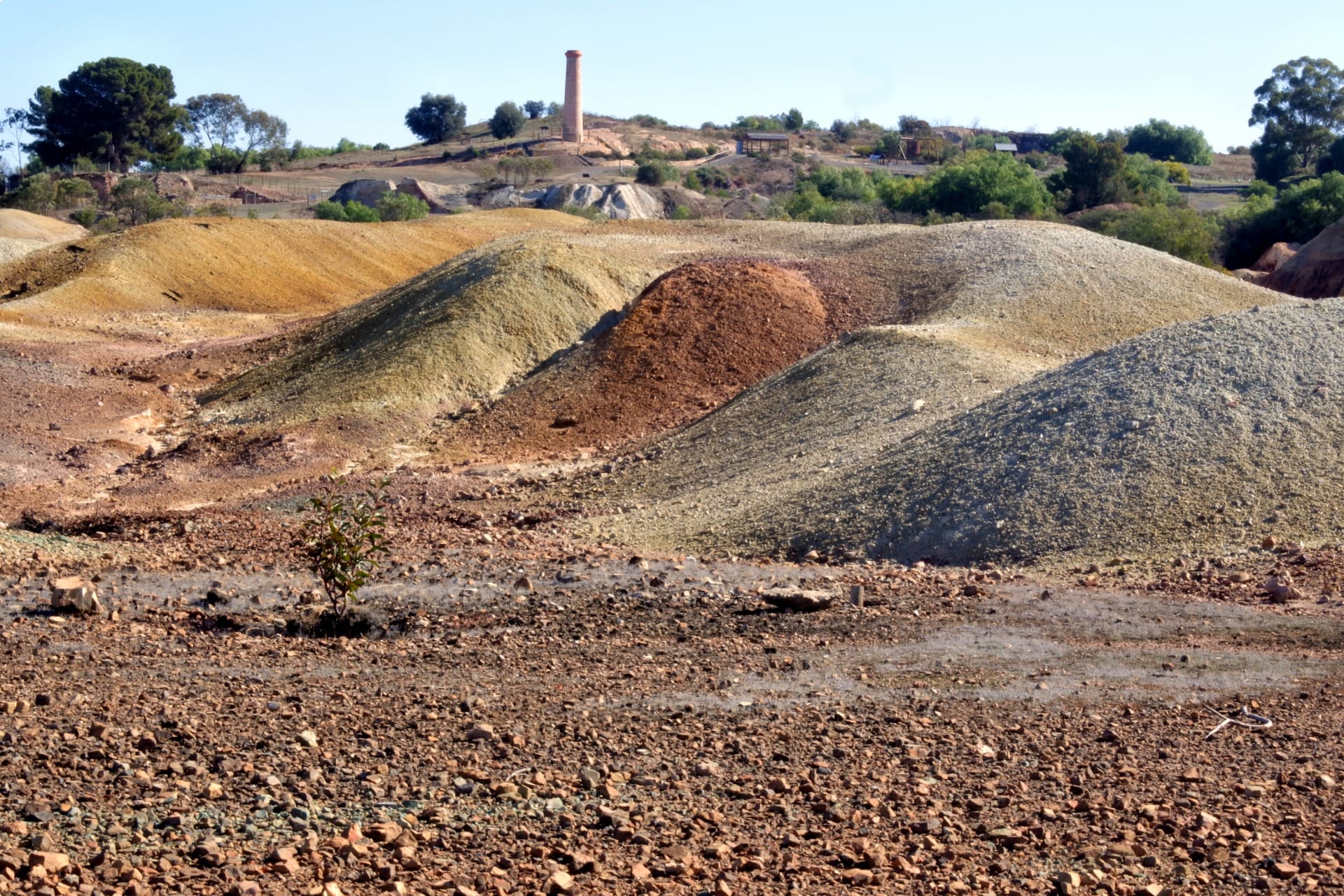
Wallaroo Mine
Shepard, James Boor, is credited with finding the first copper ore in the area in December 1859, discovered on the pastoral lease of Walter Watson Hughes and John Duncan. Hughes secured mining leases over the discovery, which was named the Wallaroo Mine, and in conjunction with Elder, Stirling and Co. (later Elder, Smith and Co.) formed the Wallaroo Mining and Smelting Company.
The Wallaroo orebody was mined over a length of about 1000m and to a depth of 850m. The primary mineral assemblage of the orebody consisted mainly of chalcopyrite with pyrite and pyrrhotite and minor galena and sphalerite in a matrix of quartz and carbonate. The host rocks were Precambrian mica schists.
Captain Eneder Warmington was appointed Captain in 1860 to superintend the development of the mine and by August the Wallaroo Mine was already employing about 200 men with 500 tons valued at £8,000 raised.
The Wallaroo Mine developed quickly in its first decade, with the price of copper at a high of £115 a ton making it very profitable. By 1869, it had achieved an annual production of 26,000 tons of ore dressed. It then reached its peak between 1870 and 1875, with up to 1,000 men and boys employed, under the superintendence of Captain Higgs. In 1876, two Cornish engines (Youngs winding engine and Harveys 60-inch pumping engine) were erected at the western end of the mine, giving the mine five operating Cornish engines in total, the largest number to operate any one time on a mine in Australia.
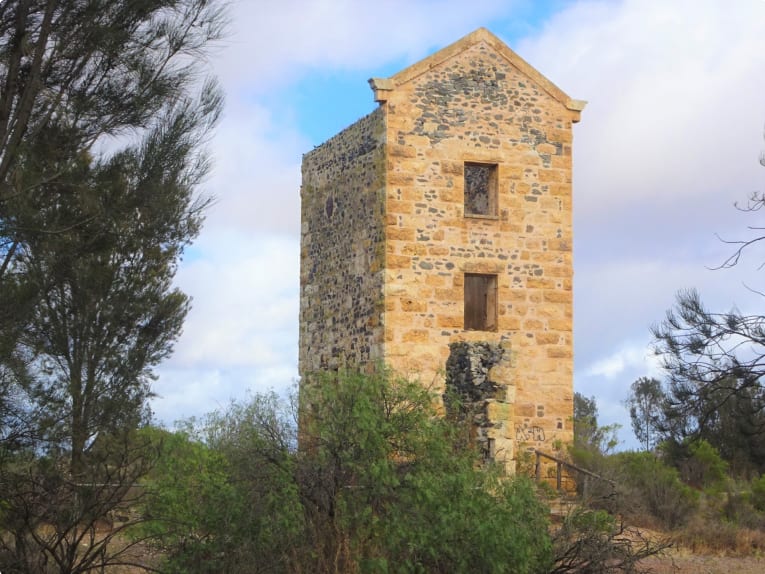
The mine was forced to close between 1878 and 1880 due to increased costs and low copper prices. Operations continued during the 1880s at a restricted level and in 1888 an 80-inch beam pumping engine from the New Cornwall Mine was re-erected at Elders Shaft. Up to 1889 the value of ores sold from the Wallaroo Mine was nearly £2.25 million.
The Moonta and Wallaroo companies amalgamated in 1890 to become the largest industrial operation in South Australia, managed under Captain H. R. Hancock and, after 1898, his son H. Lipson Hancock. During the new company’s 33 years of existence, it employed an average of 1900 people, peaking at 2700 in 1906.
After 1900, the Wallaroo Mine was modernised and there was a considerable transfer of labour and materials from the Moonta Mine, where underground production declined. Modernisation included replacing older engines with electric pumps and steam engines; replacing old Cornish boilers, carrying only about 40 psi, with Babcock and Wilcox 120 psi boilers; and erecting a central power plant and central crushing and sorting plant.
The mine enjoyed a boom period up to an including the First World War, with increased demands for copper. However, copper prices fell dramatically following the war, and the company struggled to reduce production costs, only continuing as a marginal operation. Several shortages of coal due to coal strikes in the eastern states worsened the matter, and closure soon became inevitable. In November 1923, the company went into voluntary liquidation after 63 years.
Kadina Town
The early settlements in the area were generally confined to the mine leases secured by Hughes following the discovery of copper in 1859. Miners initially lived in pine huts and calico tents and the first mine buildings were constructed with shingle roofs.
As the mines became more profitable and employed more people, a service town was required. A site to the east of the mines was chosen and surveyed toward the end of 1860, becoming the Government Town of Kadina. Its name was derived from a local Narangga First Nation word, either caddy-yeena or caddy-inna, meaning ‘lizard plain’. The Narangga Aboriginal people had inhabited this area prior to European settlement, with their lands spread across the entire Yorke Peninsula.
Allotments in Kadina were auctioned in March 1861 and, by 1862, significant building activity had begun. The main early building type in the area was the miner’s cottage, built of wattle and daub with shingle roofs, white-wash walls, and dirt floors. Accompanying them were many churches, chapels, hotels, and shops, built to serve the town’s rapidly growing population. This included the still standing Wombat Hotel, named after the animal believed to have dug up and unearthed the first discovered copper here.
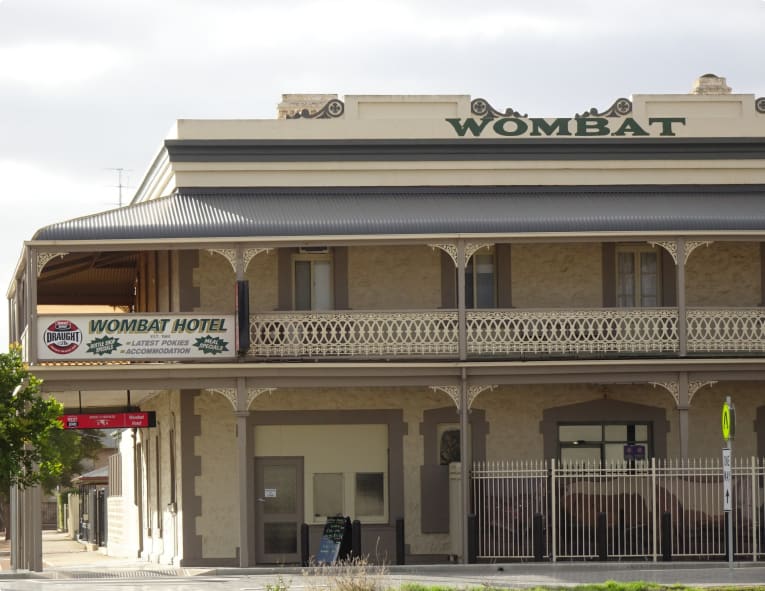
A horse-drawn tram also opened that year between Kadina and the Wallaroo Mine. By 1863, the government had further built a courthouse, police station, post office, and telegraph station. The major impetus behind the early growth of Kadina was the prosperity brought to South Australia by the rich Wallaroo copper mines.
However, the miners and working class tended to live outside of town in settlements on the Wallaroo Mines and blocks of Crown land. Many of the miners and their families had already established themselves on the mining leases and could not afford blocks in the surveyed township 2km away. As a result, it was traders and professionals who tended to live in Kadina.
The town became a municipality in 1872 and by 1875 there were 20,000 people living in the district. The population consisted predominantly of experienced Cornish miners, who had arrived in South Australia seeking alternatives to the depressed Cornish economy. With them they brought mining techniques, labour practices, architecture, and the Methodist religion.
By this stage, the state railway system was slowly spreading throughout South Australia and Kadina was eager to be linked up to it. In October 1878, after years of campaigning, a railway line between Kadina and Port Wakefield was opened, ultimately connecting Kadina to Adelaide by train. A further line connecting Kadina to Bute opened in 1879. This importance of the railway to the development of Kadina should not be underestimated; it sped up all operations between the mines and the port and was a great boom to the commerce of the town by facilitating the transport of goods.
The closure of the Wallaroo and Moonta mines and smelting company in 1923 led to a rapid decline in the mining population of the district. By this time, however, a strong pastoral tradition had grown up around Kadina to ensure the town be kept alive. Today, Kadina is the largest town on the Yorke Peninsula, a major commercial and retail centre, and service town to the nearby mines and agricultural area (which is known for its exceptionally good quality wheat and barley). It is also the gateway to the Copper Triangle, one of South Australia’s key tourist destinations.

Kadina Attractions
The town today consists of many historic Cornish-styled buildings dating from 1860. These can be best seen along the Discovering Historic Kadina Town Walk. Starting and finishing at the Town Hall (1880) in Victoria Square, the walk explores 20 well signposted historic sites including the Victoria Square Rotunda (1897), the Royal Exchange Hotel (1861), Banking and Currency Museum (1874), Masonic Hall (1993), and other churches, hotels, stores, fountains, and memorials.
The Kadina Heritage Trail, meanwhile, is a leisurely drive of 12km around the surrounding mine area and suburbs of Kadina, which can be completed in one to two hours. It encompasses 36 historic sites including the Kadina Railway Station (1878), the Church of Christ (1920), the Pioneer Cemetery (c. 1860), the Wallaroo Mine (1860), and the former Police Residence (c. 1900), amongst others.
The remnants and ruins of the Wallaroo Mine are located 1.5 km south-west of the town centre, easily identified due to the large stone ruins of Harvey’s Enginehouse (erected 1876). All the important destinations at this site are clearly signposted.

Located 1.5 km south of the town centre is the Farm Shed Heritage Museum, behind the Copper Coast Visitor Centre. On show across half a hectare of undercover exhibition space, the museum tells the stories of farming in the Yorke Peninsula, the local copper mining industry, and the social history of Kadina. This includes an extensive photo collection, displays of old farming and mining equipment, and a life-size model of an underground mine.
At the museum, visitors can also tour the historic Matta House, built in 1863 as a residence for Edward Austin Horn, the manager of Matta Mine. The historic bungalow still has a shingle roof and is refurbished to late Victorian period when copper mining in the area was at its peak. There is also a 1950s demountable schoolroom on the site, which was moved to the museum shortly after the school closed. It remains furnished as a typical rural schoolroom of the era.
Another popular tourist attraction is the Kernewek Lowender, a Cornish festival, held every odd year in May in Kadina (as well as Moonta and Wallaroo, with each location hosting the festival for one day). The world’s largest Cornish Festival welcomes 45,000 people each time to join in the festivities and celebrate the area’s Cornish heritage. Events include traditional Cornish dancing, street parades, a classic cavalcade of cars and motorcycles, a pasty bake-off, concerts, ceremonies, markets, feasts, exhibitions, pub specials, art exhibitions and much more.
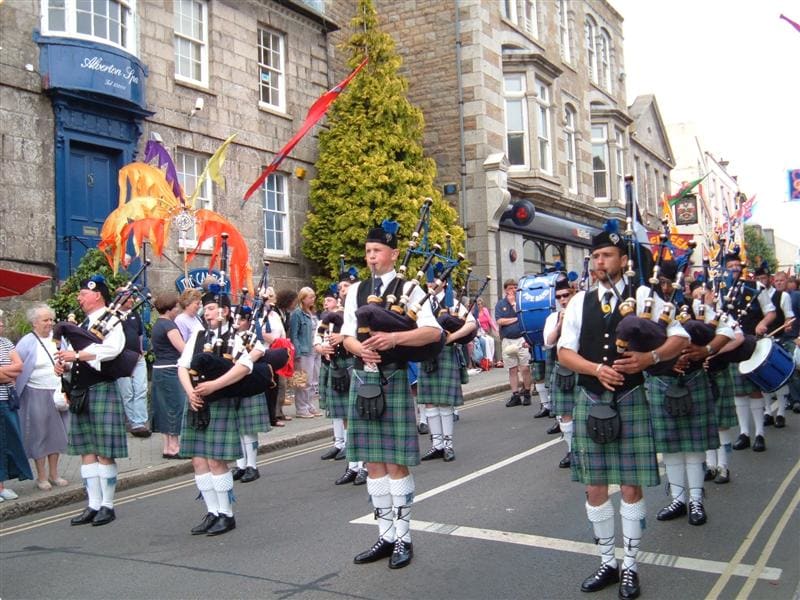
Tour of Kadina
During Odyssey Traveller’s Tour of Eyre & York Peninsulas and the Gawler Ranges we visit the historic towns of Kadina, Wallaroo, and Moonta, known as the Copper Triangle. Copper production ceased in 1923, but the industry continues to shape the culture of the area which is still known as Little Cornwall (or Copper Coast) thanks to the number of Cornish immigrants who worked in the copper industry.
This 15-day small group tour to the Yorke Peninsula, Eyre Peninsula, and the Gawler Ranges is designed for mature and senior travellers, travelling as a couple or single traveller, to discover the hidden gems of South Australia. You’re likely (rightly) familiar with the wine regions of the Barossa Valley, Clare Valley and McLaren Vale, the pristine scenery of Kangaroo Island, and the outback adventures offered on the stunning Flinders Ranges. Yet, the lesser-known western half of South Australia is a worthy rival for an Australia vacation, offering the pristine coasts of the Yorke Peninsula and Eyre Peninsula – often strikingly under developed compared to the East Coast of Australia – and the rugged landscapes of the Gawler Ranges. Delve deeper, and the visitor will find a fascinating journey and often unexpected South Australian history as they travel to this unique destination.
This tours, like all Odyssey Traveller small group tours, is limited to 15 people.
Our Australian tours are small group outback tours for seniors, designed for mature travellers who want an in-depth and authentic experience of their chosen destination. Since 1983, we have specialised in bringing Australian travellers to the world: now, our goal is to let you again rediscover your own country. We don’t just go from tourist stop to tourist stop, but aim to get off the beaten path, bringing to life some of the less-explored regions on your chosen Outback Australia tour. We want you to see Australia through new eyes as you travel, learning about geology, Aboriginal culture, native wildlife and local history as you pass through the ‘Wild West’ landscapes of Southern Australia.

Articles about Australia published by Odyssey Traveller:
- 19th Century South Australian Mining
- The Kimberley: A Definitive Guide
- Uncovering the Ancient History of Aboriginal Australia
- Aboriginal Land Use in the Mallee
- Mallee and Mulga: Two Iconic and Typically Inland Australian Plant Communities (By Dr. Sandy Scott).
- The Australian Outback: A Definitive Guide
For all the articles Odyssey Traveller has published for mature aged and senior travellers, click through on this link.
External articles to assist you on your visit to Australia:
- UNESCO: Budj Bim Cultural Landscape and Willandra Lakes Region
- Finding Mungo Man: the moment Australia’s story suddenly changed
- A 42,000-Year-Old Man Finally Goes Home
- Fish traps and stone houses: New archaeological insights into Gunditjmara use of the Budj Bim lava flow of southwest Victoria over the past 7000 years
- ‘A big jump’: People might have lived in Australia twice as long as we thought
- Mildura, Victoria
- Righting the wrongs of the Sunraysia sultana’s confusing history
- Burra, South Australia: Travel guide and things to do
Odyssey Traveller acknowledges Aboriginal and Torres Strait Islander peoples as the First Australians and Traditional Custodians of the lands where we live, learn and work. We pay our respects to Elders past, present, and emerging.
Related Tours

days
Mar, May, Aug, Sep, Oct +2Small group tour of World Heritage sites and more in the Southern States of Australia
Visiting New South Wales, South Australia
Discover the World Heritage Sites of the southern states of Australia travelling in a small group tour. A journey of learning around the southern edges of the Murray Darling basin and up to the upper southern part of this complex river basin north of Mildura. We start and end in Adelaide, stopping in Broken Hill, Mungo National Park and other significant locations.

15 days
Sep, Dec, Jan, Feb, Mar +2Eyre & Yorke Peninsulas, and the Gawler Ranges
Visiting South Australia
Small group tour South Australia. Yorke, Eyre, and Gawler Ranges, discover the local history.
From A$10,350 AUD
View Tour
days
Feb, Mar, May, Jul, Sep +2Guided small group motorcycle tour of World Heritage sites in Victoria and South Australia
Visiting
Discover the World Heritage Sites of the southern states of Australia travelling in a small group tour of like minded motorcyclists. A journey of learning around the southern edges of the Murray Darling basin and up to the upper southern part of this complex river basin north of Mildura. We start and end in Adelaide, stopping in Broken Hill, Mungo National Park and other significant locations.

days
Feb, Mar, Apr, May, Jul +2Small group Motorcycle tour of South Australia
Visiting South Australia
Escorted small group tour for senior motorcycle riders of the Flinders range in South Australia from Adelaide. Learn about Coober Pedy, Wilpena pound and water system of Lake Eyre as we explore and learn also about the history of the people who explored the Flinders.
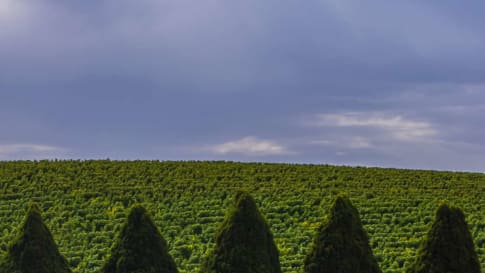
days
May, Aug, Sep, Oct, Nov +3Small group holidays to Adelaide and surrounds
Visiting South Australia
Explore and learn about on a small group tour of Adelaide city and its pastoral, cultural and historic settlement. Visit Fleurieu Peninsula, the Barossa valley, learn about William Morris and the arts and craft movement in the Art gallery and National trust houses.




